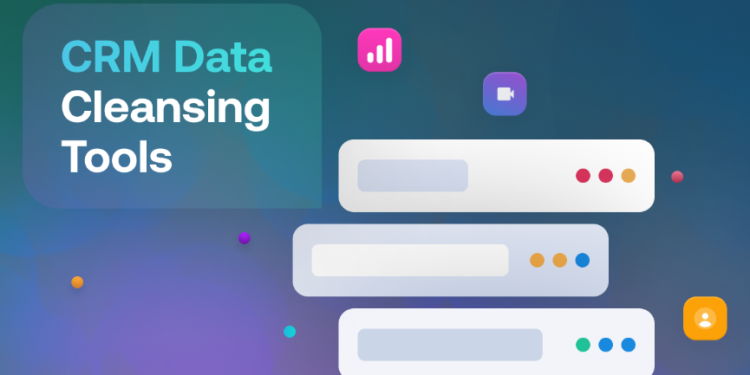Your CRM is supposed to make things easier with tracking contacts, following up with leads, and keeping your sales and marketing aligned. But when the data inside it is outdated, messy, or flat-out wrong, it does the opposite. Sales waste time on dead leads, campaigns hit the wrong audience, and reports lose their value.
This blog walks you through practical ways to clean up your CRM and keep it that way. From regular checks to better data entry habits, it covers the basics that often get overlooked.
Start with a Thorough Audit
Before you go for CRM data cleaning, take a step back and look at what’s already in your system. This isn’t just about scanning for duplicates, but you want to check for missing details, odd formatting, and outdated information too.
Start by pulling reports on your contact records. Look for incomplete fields, like missing phone numbers or company names. You might also find mismatched job titles or multiple versions of the same account.
Don’t do this alone when you can bring in input from sales, marketing, and support. Different teams use the CRM in different ways, so they’ll spot gaps you might miss. A shared understanding of what “clean” looks like helps you build standards everyone can follow.
Fix What’s Wrong, One Step at a Time
Once the audit shows you the trouble spots, it’s time to fix them. You might think this means hours of manual cleanup, and sometimes it does, but you can also use built-in tools or apps that help with bulk updates.
Look at contacts with incorrect or outdated emails, leads with the wrong company info, or records that don’t belong there anymore. You’ll also want to remove or merge duplicates.
CRM data cleaning works best when you approach it as a routine, not a one-time task. Set aside time weekly or monthly to spot-check your records and adjust before things pile up.
Keep the Format Consistent
You’ve probably seen this before: one person enters “New York,” another types “NY,” and someone else writes “N.Y.” It might seem minor, but little differences like that make your data harder to search, sort, or automate.
Create clear rules for how data should be entered, whether it’s titles, phone numbers, or addresses. Use dropdowns where possible to limit how people enter information. For free text fields, give your team a guide or template they can refer to when entering notes.
Over time, this consistency pays off. It makes reporting more accurate, helps filters work the way you expect, and reduces confusion across teams.
Validate and Enrich the Information You Keep
It’s one thing to fill in every field. It’s another to make sure what you’re keeping is actually correct.
Validation means checking if emails are active, phone numbers are real, and people still work where they say they do. Many CRMs now offer plugins or integrations that flag bad data as it’s entered or run checks on what’s already there.
You can also use enrichment tools to add missing details, like company size or industry. Just don’t go overboard. Focus on information that supports how your team works; if you’re not using it, it’s just extra noise.
Put Regular Checks and Automation in Place
Cleaning your CRM once is helpful. Keeping it clean over time is better.
Set up a system that runs basic checks on a regular schedule. Look for things like duplicate entries, outdated contacts, or empty fields. Some CRMs let you set up alerts or rules that catch errors as they happen, like when someone enters a phone number in the wrong format or skips a required field.
You don’t need to check everything every day. A quick monthly review of new data and a deeper clean every quarter usually does the trick. And if your CRM allows, build workflows that fix smaller issues automatically, like flagging or merging duplicates.
Train Your Team and Keep Access Simple
Even the best cleanup won’t last if people keep adding bad data. You don’t need strict rules for every click, but a little guidance goes a long way.
Run short training sessions when someone new joins the team. Show them how your CRM works, what matters most in each record, and the small habits that make a big difference, like using dropdowns instead of typing free text or checking for existing contacts before adding a new one.
Also, think about who needs access to edit what. Not everyone should be able to change account details or lead scores. Keep editing rights focused on the roles that truly need them. It helps prevent accidental changes and keeps your data more reliable.
Looking Ahead
CRMs are only getting smarter with AI, better automation, and deeper integrations. But none of that means much if the data feeding those systems is wrong.
As your company grows, you’ll collect more information across more touchpoints. That makes CRM data cleaning even more important. Not just for fixing mistakes, but for keeping the big picture clear.
Think of your CRM as a reflection of how you work. If the data is clean, your teams move faster, your insights improve, and your decisions carry more weight. A tidy CRM today sets you up for smarter systems tomorrow.





